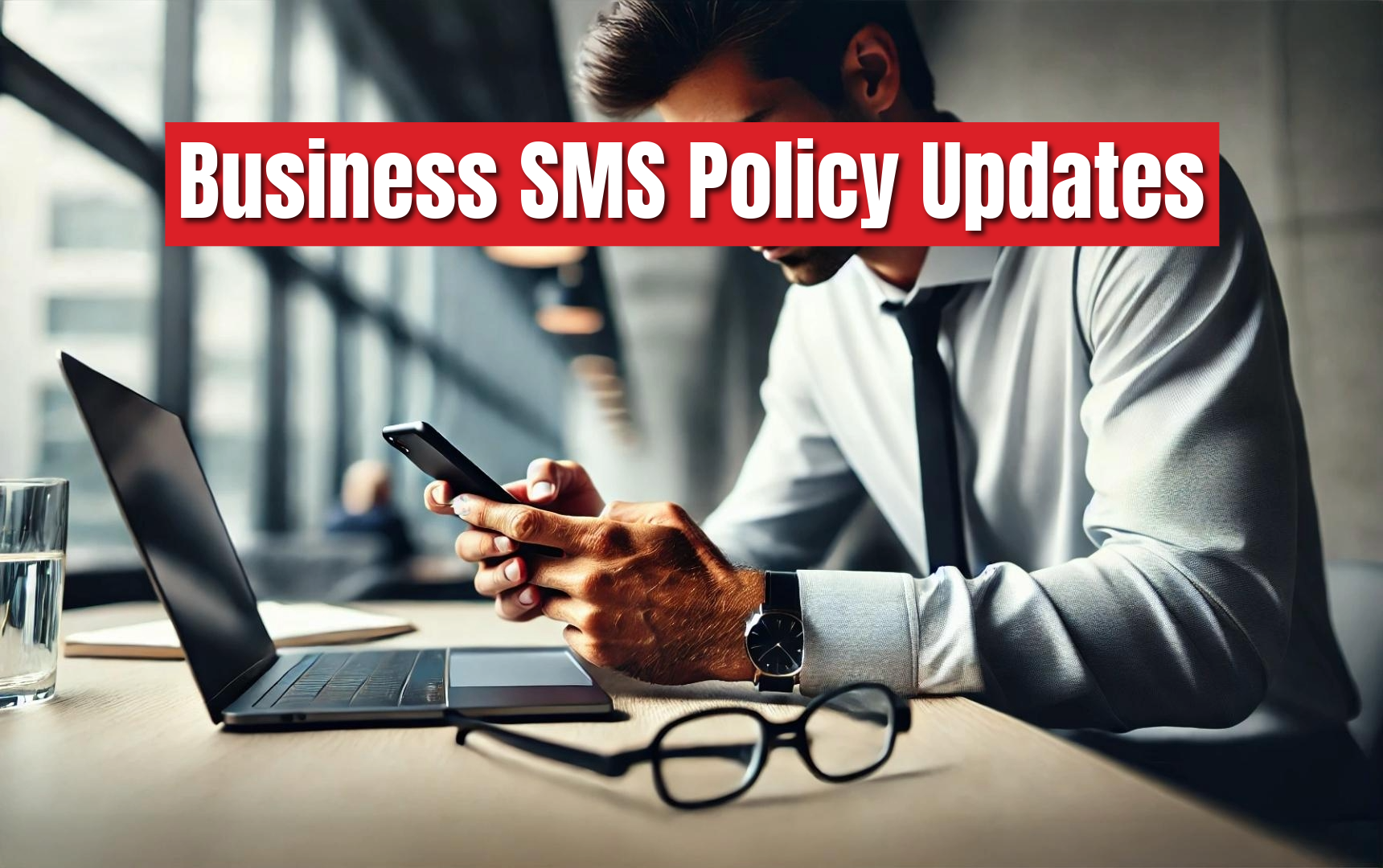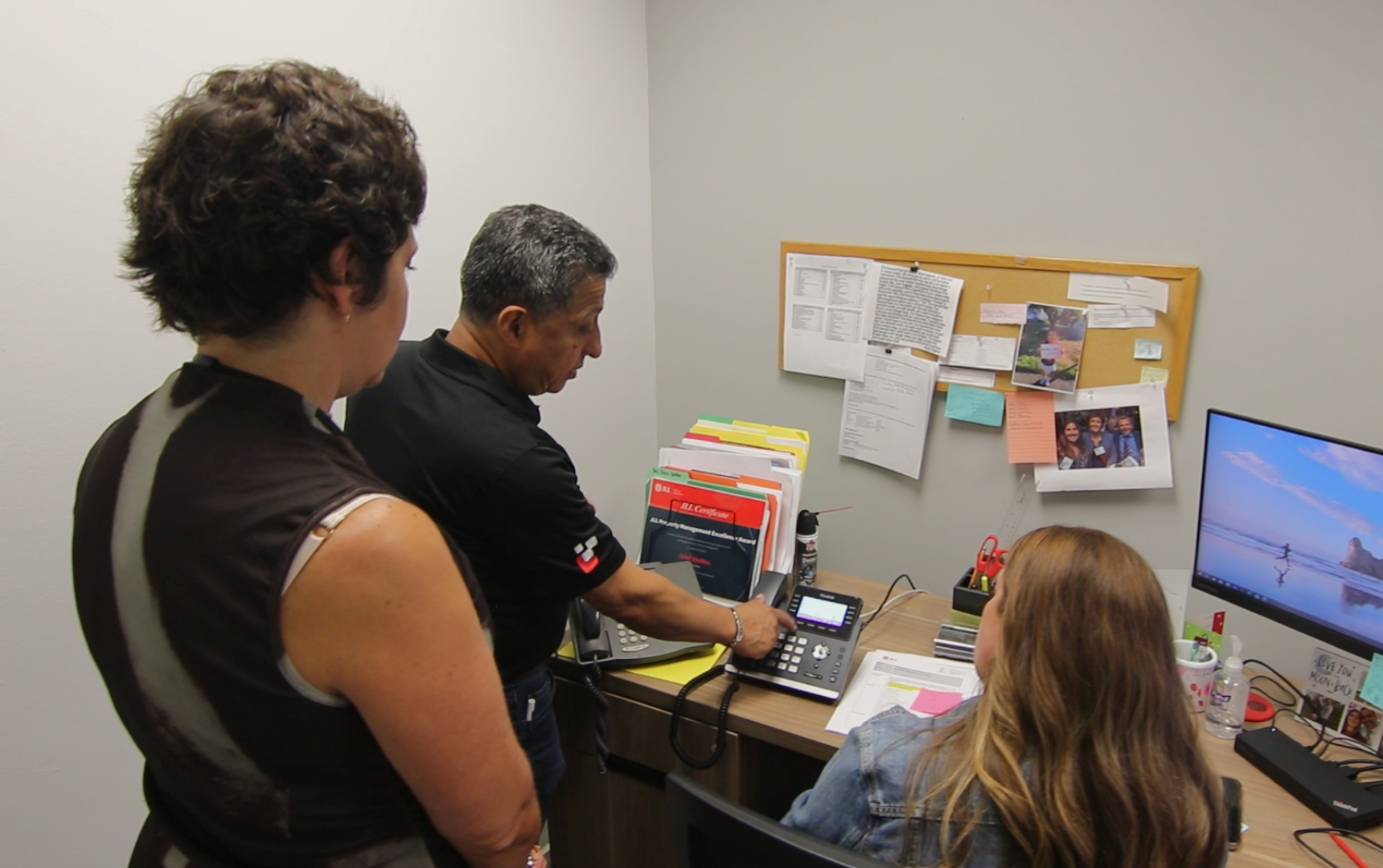Why TCR Rejects SMS Campaigns—and How to Get Yours Approved
Are your business text messages being rejected before they ever reach your customers? If so, you're not just dealing with a tech hiccup—you're facing a costly compliance issue that can stall your entire communication strategy.
With 98% of SMS messages being opened, it's no wonder that business texting is one of the most effective channels available today. But to leverage it legally and reliably, your messages must pass through The Campaign Registry (TCR)—a mandatory compliance checkpoint for all SMS campaigns using 10DLC numbers.
At TeleCloud, we've helped businesses across industries successfully navigate the complex TCR approval process, fix rejected campaigns, and establish fully compliant texting programs that reach customers with confidence.
In this guide, you’ll learn exactly why your campaign may have been rejected and what steps you can take to fix it and get approved, without guessing, overcomplicating, or wasting time.
Table of Contents
Use these quick links to jump to the sections you need:
- What Is The Campaign Registry (TCR) and Why Does It Matter?
- Why Is My TCR Campaign Getting Rejected?
- Missing or Non-Compliant Privacy Policy & Terms and Conditions
- SMS Opt-In Process is Incomplete or Confusing
- Missing or Non-Compliant Opt-Out and Help Messaging
- Mismatched or Incomplete Campaign Details
- Prohibited or Blocked Content Categories
- Shortened or Missing URLs in Sample Messages
- Administrative Errors & EIN/Brand Mismatches
- How Can You Get Your TCR Application Approved?
What Is The Campaign Registry (TCR) and Why Does It Matter?
Unlike email, SMS delivers messages straight to a person’s native texting app. That makes it more personal, instant, and highly regulated. With its power comes the potential for abuse, and carriers know it.
That’s where The Campaign Registry (TCR) comes in. TCR works with carriers like AT&T, Verizon, and T-Mobile to:
- Vet businesses and their message use cases
- Ensure transparency and consumer trust
- Help prevent spam, fraud, and unwanted messages
What’s involved in the TCR approval process?
To send SMS campaigns via 10DLC, you need to complete two key registrations:
- Brand Registration – Validates your business identity
- Campaign Registration – Details how you plan to use SMS and includes sample messages
Once submitted, your application is reviewed by carriers and TCR. If anything is unclear, non-compliant, or doesn’t match what’s in your registration, your campaign will be rejected, delaying your launch and potentially putting your brand at risk if messages go out without proper approval. If you would like assistance, check out how TeleCloud can help you get registered.
Why Is My TCR Campaign Getting Rejected?
Understanding why your SMS campaign was rejected by The Campaign Registry (TCR) is crucial to successfully navigating the approval process. Below are the primary reasons for TCR rejections, along with explanations and guidance to help you address each issue effectively.
1. Missing or Non-Compliant Privacy Policy & Terms and Conditions
Your Privacy Policy and Terms of Service are legal foundations for SMS compliance. TCR checks these pages to ensure you’re collecting data ethically, clearly explaining your intentions, and protecting user information.
TCR Rejection Codes Explained:
- 803 – Your website has no language about users opting in to SMS.
- 804 – Website form doesn’t explain how users consent to SMS.
- 805 – Privacy policy is missing or doesn’t mention SMS/data sharing.
- 851 – No link to a privacy policy; opt-in data not protected.
- 852 – Help instructions are missing from the policy or terms.
- 9108 – Privacy policy not compliant or not listed.
- 9109 – Privacy policy opt-in is generic, not SMS-specific.
How to Fix TCR Rejections:
- Create a dedicated Privacy Policy and Terms of Service page if you don’t already have one.
- Add SMS-specific language in both documents. Here’s what it should say:
- In your Privacy Policy: “We collect phone numbers for the purpose of sending SMS messages. SMS opt-in data and consent will not be shared with or sold to third parties.”
- In your Terms of Service (or close to your opt-in form): “By providing your phone number, you agree to receive automated text messages from [Your Business]. Message frequency varies. Message and data rates may apply. Reply STOP to unsubscribe or HELP for help. View our Privacy Policy [link] and Terms of Service [link].”
- Place links directly under any opt-in forms, preferably on the same page (not hidden in footers). Use full URLs (e.g., yourdomain.com/privacy), not just anchor text like “Click here.”
- Check for conflicting language—if your privacy policy mentions third-party data sharing or vague "marketing partners," revise or remove that clause, or add: “This excludes SMS opt-in data and consent, which will not be shared.”
2. SMS Opt-In Process is Incomplete or Confusing
TCR requires explicit, documented consent to send SMS. Whether through a website form, paper form, or verbal opt-in, you must provide evidence of the process. (Image source: sales message)
TCR Rejection Codes Explained:
- 806 – Your call-to-action for consent is unclear or missing.
- 861 – You didn’t include a proper opt-in CTA or keyword language.
- 9102 – Campaign description is too vague.
- 9103 – Website form lacks required opt-in language.
- 9104 – You didn’t explain how consent is collected outside the site.
- 9105 – You didn’t provide the URL where the opt-in is gathered.
- 9112 – Your opt-in checkbox is pre-checked or required.
How to Fix TCR Rejections:
- Review how you’re collecting phone numbers. You must explain your opt-in process in your application—this is non-negotiable.
- On Website Forms:
- Add an unchecked checkbox labeled with this exact language: “I consent to receive automated marketing text messages from [Business Name]. Message & data rates may apply. Frequency varies. Reply STOP to unsubscribe or HELP for help. See our Privacy Policy and Terms of Service.”
- Place this directly beneath the phone number field, not buried elsewhere.
- Link directly to your Privacy Policy and Terms using full URLs.
- If you collect consent offline or verbally:
- Provide verbatim script used to ask for consent: “Do you agree to receive text messages from [Company]? Message frequency may vary. Message and data rates may apply. Reply STOP to unsubscribe. View our Privacy Policy at [link] and Terms of Service at [link].”
- Include a screenshot of the paper form, digital document, or app screen where consent is collected (9107).
- If you collect via email or 3rd-party tools, explain how the customer is made aware of their rights and provide a link or file showing the consent flow.
- Address URL issues:
- If your rejection says 9105, that means the TCR couldn’t find your opt-in form. Double-check and provide the exact page URL with the opt-in form visible.
.jpg?width=283&height=302&name=Image%20(18).jpg) 3. Missing or Non-Compliant Opt-Out and Help Messaging
3. Missing or Non-Compliant Opt-Out and Help Messaging
SMS users must have the ability to stop messages or get assistance easily. These messages are required by law and TCR regulations.
TCR Rejection Codes Explained:
- 611 – Keyword responses (START, HELP, STOP) are missing details.
- 851 – Opt-in/opt-out messages lack fee disclosure or brand name.
- 861 – Incomplete CTA and missing opt-out/help instructions.
- 9106 – Opt-out language is missing from sample messages.
- 9403 – Incorrect or missing opt-in/opt-out/help keyword messages.
How to Fix TCR Rejections:
- Include Opt-Out Language in at Least One Sample Message: “Thanks for subscribing to [Brand]! Reply STOP to unsubscribe, HELP for help. Msg & data rates may apply.”
- Make sure you provide keyword replies for:
- START / SUBSCRIBE: Confirmation message that includes brand name, opt-out instructions, and fee disclosure: “You’ve subscribed to [Brand] alerts. Reply STOP to cancel. Msg & data rates may apply.”
- STOP: Confirmation they’ve been unsubscribed: “You have opted out of [Brand] messages. You will receive no further messages. Reply START to resubscribe.”
- HELP: Must include a way to contact you (email, website, or phone number): “Need help? Contact [Brand] at support@yourdomain.com or visit yourdomain.com/help.”
- Include this information in your campaign registration, even if the form auto-generates some of it—TCR wants full clarity.
4. Mismatched or Incomplete Campaign Details
TCR needs to see consistency between your sample messages, selected use case, and your actual business. Mismatches raise red flags.
TCR Rejection Codes Explained:
- 601 – Sample messages include links/phone numbers or content not disclosed in the form.
- 602 – Sample messages don’t match your business industry.
- 603 – Website, brand name, and messages don’t align.
- 9301 – Campaign attributes don’t match your website/message content.
- 9302 – Sample message tone doesn’t match selected use case (e.g., “conversational” vs “automated”).
- 9303 – Inconsistent messages, branding, or URLs.
- 9304 – Website lacks legitimacy or brand identity.
- 9503 – You didn’t submit three unique sample messages.
How to Fix TCR Rejections:
- Match your sample messages to the selected use case exactly:
- If your use case is "Customer Care", your samples should look like: “Hi [Name], this is [Rep] from [Brand]. We’ve scheduled your appointment for Thursday at 10 am. Reply YES to confirm.”
- Avoid promotional language like: “Don’t miss our BIG SALE—50% OFF today only!”
- Use Three Unique Messages:
- Not just variants of the same line. Instead of: “Thanks for contacting us.” (x3)
- Try:
- “Hi [Name], your order from [Brand] has shipped.”
- “Your [Brand] service tech will arrive at 3 PM.”
- “Please complete your feedback survey for [Brand].”
- Align Website and Messaging:
- If your site says you’re a dental clinic but messages are about “investment opportunities,” that’s a mismatch (602, 9301, 9303).
- Use the same brand name, tone, and terminology across:
- Your domain
- Sample messages
- Legal documentation
- Avoid generic or AI-generated samples.
- TCR reviewers can tell. Tailor them to your business, and proofread for tone and accuracy.
5. Prohibited or Blocked Content Categories
Certain content categories are automatically disqualified by TCR due to legal or ethical risks. These are considered terminal rejections—you cannot reapply with this content.
TCR Rejection Codes Explained:
- 701 – Mentions marijuana or kratom.
- 702 – Mentions guns or ammunition.
- 703 – Mentions sexually explicit content.
- 704 – Mentions gambling.
- 705 – Contains hate speech.
- 706 – Refers to alcohol (age gate required).
- 707 – Mentions tobacco or vaping.
- 708 – Mentions lead generation or referrals.
- 709 – Mentions high-risk financial services (crypto, hedge funds, NFTs, payday loans).
- 9201, 9202, 9208, 9209 – Additional variations of the above.
How to Fix TCR Rejections:
- Double-check if your business is in a prohibited category.
- If you reference any of these in sample messages, REMOVE IT.
- If it’s in your privacy policy or website, REMOVE or REPHRASE IT.
- If your industry is blocked and core to your business:
- You may need to avoid SMS altogether or use non-10DLC platforms that support short codes with additional vetting.
6. Shortened or Missing URLs in Sample Messages
Public link shorteners (e.g., bit.ly) are banned because they can hide malicious content. TCR requires full or branded URLs.
TCR Rejection Codes Explained:
- 9401 – You used a public URL shortener like bit.ly or tinyurl.
- 9402 – You referenced a link but didn’t include the actual URL.
How to Fix TCR Rejections:
- Don’t use Bitly, TinyURL, etc.
- Use branded short links (e.g., go.yourdomain.com/promo123), or just full URLs: “View details at https://yourcompany.com/service-checklist”
- If your message says “click here,” make sure the link is actually included.
7. Administrative Errors & EIN/Brand Mismatches
TCR verifies your legal business info. If there’s an inconsistency between your EIN, brand, or business name, your application gets flagged.
TCR Rejection Codes Explained:
- 710 – Registered the wrong brand (e.g., parent company vs. actual sender).
- 711 – Used the same EIN for multiple brands.
- 712 – You’re a lender but didn’t mark the lending checkbox.
- 713 – You used a Gmail or personal email instead of a company domain.
- 802 – You tried to register as a sole proprietor.
- 9110 – The URL provided is invalid or inaccessible.
How to Fix TCR Rejections:
- Match your EIN info to your IRS SS-4 letter—this includes:
- Exact legal business name
- Business address
- EIN number
- Register each brand independently if you're managing multiple sub-brands.
- If you’re a lender, check “direct lending” on the form (712) and explain how your messages are compliant.
- Use a professional email domain:
- ✅ jane@yourbrand.com
- ❌ jane@gmail.com
- Ensure your website is live and accessible (9110), with relevant business info clearly displayed.
What Happens If You Keep Getting Rejected?
Rejections don’t just cost time—they stall your growth.
- Each rejection can push your campaign timeline back by days or even weeks.
- If you’re repeatedly denied, your brand could be flagged as non-compliant, hurting future applications.
- Some rejections (like prohibited industries) are terminal, meaning appeals are not accepted.
How Can You Get Your TCR Application Approved?
Most TCR rejections are avoidable with the right prep. Use our free TCR Resubmission Readiness Checklist to catch compliance issues before you submit, so your campaign aligns with TCR and carrier expectations from the start.
Partner With Experts Who Know the Process
We’ve helped hundreds of businesses write compliant messages, set up proper opt-in flows, and avoid costly errors. Whether you're starting fresh or fixing a rejection, we’ll guide you through it—step by step.
From Rejected to Ready: Your Compliance Roadmap
Most TCR rejections can be prevented with the right structure, clarity, and compliance checks. Once you understand what TCR and carriers are really looking for, you can build campaigns that get approved faster and perform better.
SMS is a powerful tool, but it comes with strict rules. Success starts with consent, transparency, and a campaign setup that puts the customer first.
Start by reviewing your opt-in process, privacy policy, and sample messages. Then use our TCR Readiness Checklist to make sure your campaign is ready for submission.
At TeleCloud, we don’t just help businesses communicate, we help them communicate compliantly. Our team is here to walk you through every step of the TCR process so you can avoid delays, reduce risk, and start reaching your audience with confidence.
Let’s make sure your next SMS campaign gets approved the first time. Book a free consultation with a TeleCloud expert today.



